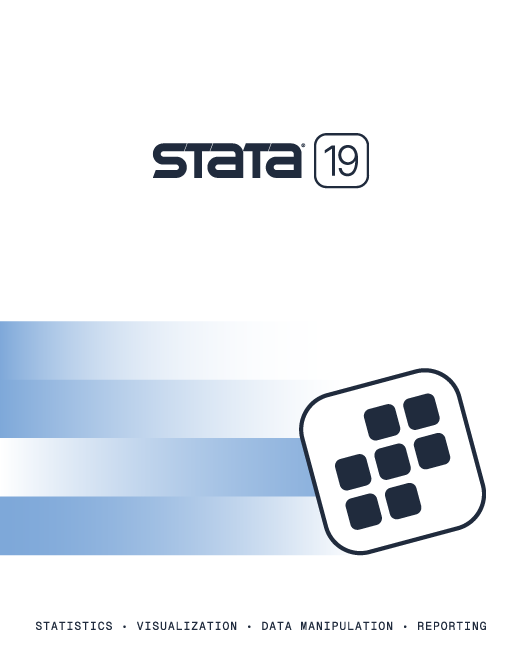

2025 Stata Conference • Nashville, TN • 31 July–01 August
Maximum likelihood without programming | Order |
Maximization of user-specified likelihood functions has long been a hallmark of Stata, but you have had to write a program to calculate the log-likelihood function. Now it is even easier. The only requirements are that you be able to write the log likelihood for individual observations and that the log likelihood for the entire sample be the sum of the individual values.
Stata can fit probit models, but let’s write our own.
The log-likelihood function for probit is
LL(y) = ln(normal(x'b)) if y==1
= ln(normal(-xb)) y==0
To fit a model of outcome on age and weight, we type
. mlexp (cond(outcome==1, ln(normal({xb:age weight} + {b0})), ln(normal(-1*({xb:} + {b0}))) ))
initial: log likelihood = -51.292891
final: log likelihood = -51.292891
rescale: log likelihood = -51.292891
Iteration 0: log likelihood = -51.292891
Iteration 1: log likelihood = -25.436922
Iteration 2: log likelihood = -25.303978
Iteration 3: log likelihood = -25.303693
Iteration 4: log likelihood = -25.303693
Maximum likelihood estimation
Log likelihood = -25.303693 Number of obs = 74
| Coef. Std. Err. z P>|z| [95% Conf. Interval] | ||
| /xb_age | .2279405 .0887648 2.57 0.010 .0539648 .4019163 | |
| /xb_weight | .01195 .0094324 1.27 0.205 -.0065372 .0304373 | |
| /b0 | -9.765827 2.656796 -3.68 0.000 -14.97305 -4.558604 | |
Those results are exactly the same as those produced by Stata’s probit.
See the manual entry.
It’s hard to beat the simplicity of mlexp, especially for educational purposes.
mlexp is an easy-to-use interface into Stata’s more advanced maximum-likelihood programming tool that can handle far more complex problems; see the documentation for ml.
ml itself is an easier-to-use interface into Stata’s most advanced optimization programs found in Stata’s matrix language; see the documentation for mopmitize(), optimize(), solvenl(), and deriv().
If you want to fit models via the generalized method of moments (GMM), see the documentation for Stata’s gmm.
See New in Stata 19 to learn about what was added in Stata 19.
Learn
Free webinars
NetCourses
Classroom and web training
Organizational training
Video tutorials
Third-party courses
Web resources
Teaching with Stata
© Copyright 1996–2025 StataCorp LLC. All rights reserved.
×
We use cookies to ensure that we give you the best experience on our website—to enhance site navigation, to analyze usage, and to assist in our marketing efforts. By continuing to use our site, you consent to the storing of cookies on your device and agree to delivery of content, including web fonts and JavaScript, from third party web services.
Cookie Settings
Last updated: 16 November 2022
StataCorp LLC (StataCorp) strives to provide our users with exceptional products and services. To do so, we must collect personal information from you. This information is necessary to conduct business with our existing and potential customers. We collect and use this information only where we may legally do so. This policy explains what personal information we collect, how we use it, and what rights you have to that information.
These cookies are essential for our website to function and do not store any personally identifiable information. These cookies cannot be disabled.
This website uses cookies to provide you with a better user experience. A cookie is a small piece of data our website stores on a site visitor's hard drive and accesses each time you visit so we can improve your access to our site, better understand how you use our site, and serve you content that may be of interest to you. For instance, we store a cookie when you log in to our shopping cart so that we can maintain your shopping cart should you not complete checkout. These cookies do not directly store your personal information, but they do support the ability to uniquely identify your internet browser and device.
Please note: Clearing your browser cookies at any time will undo preferences saved here. The option selected here will apply only to the device you are currently using.